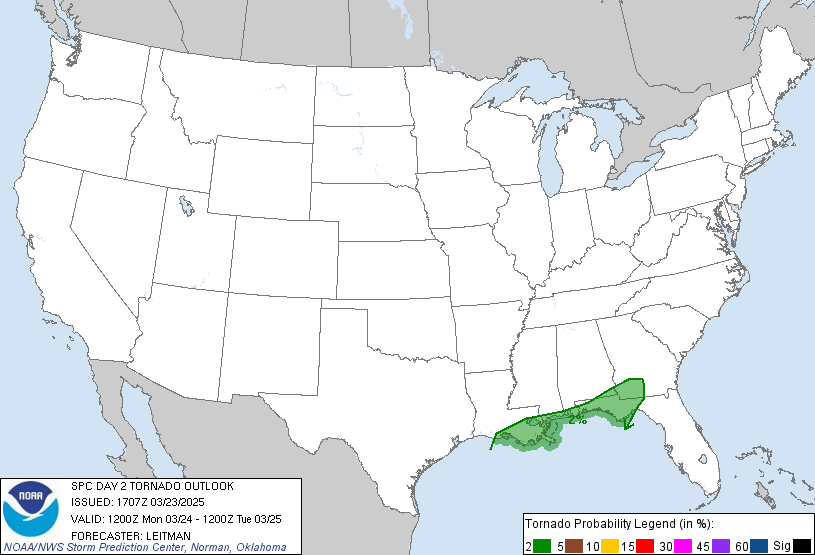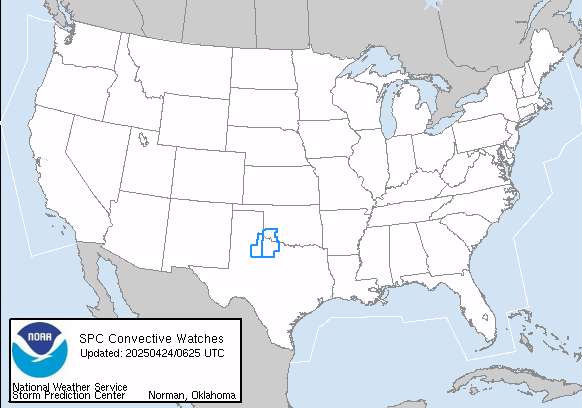Tornado Tracker live map
Move the map to find the Tornado you want to track.
Even though tornadoes are relatively rare, you should still know how to recognize them and what to do as soon as you realize a tornado is near you!
Tornado probability in the U.S.A. today
Tomorrow’s tornado probability in the U.S.A.
Current severe weather watches
Severe thunderstorm watches are blue. Tornado watches are red.
How to read the tornado radar
When you look at the tornado tracker, you can learn some interesting things about the current weather. For example, you can see if there is a tornado nearby. If you use the tornado radar to predict the weather, you can also see where a tornado might occur. When you use the tornado tracker to predict the weather, you should interpret it as if you were reading a map.
Tornado tracker shows you the location of nearby tornadoes. The colors of the tornado radar tell you the strength of the tornado. The bigger and stronger the tornado is, the redder it appears on the tornado radar. The shape of the tornado on the radar gives information about its direction. If the tornado is pointing up to the left, it is moving northeast. If it is pointing up to the right, it is moving southeast. If it is horizontal, it is moving either west or east. And if it’s pointing down, it’s moving northwest or southwest.
When using tornado radar to predict where a tornado may occur, you should first consider the strength of the tornado. The stronger the tornado, the more likely it is to form. Second, you should consider the direction the tornado is pointing. If it is horizontal, it is more likely to form. And third, you should consider where the tornado is located. The farther it is from the center of the storm, the more likely it is to form.
What is a tornado?
A tornado is a rapidly spinning, powerful storm depression that rises from the lower levels of the atmosphere into the troposphere. Tornadoes can occur over land or over water and usually range in width from a few hundred meters to a few kilometers. They are very dangerous and can cause severe damage.
How do tornadoes form?
Tornadoes form when cold and warm air mix. The cold air is heavier than the warm air and pushes the warm air upward. As the cold air rises, a vortex forms that continuously spins. The greater the temperature difference between the cold and warm air, the stronger the vortex becomes. Tornadoes can form very suddenly and are usually only a few minutes long.
When does tornado season begin in the U.S.?
Tornado season in the United States officially begins on June 1 and ends on November 30. This is when the risk for tornadoes is highest. However, most tornadoes in the U.S. occur in May, June and July. In recent years, however, there have been exceptions, so tornadoes can occur outside of the official season. The first half of the season is usually the most active, as this is when most weather conditions are most favorable for tornado formation.
Tornado classes
A tornado is an extremely violent weather event characterized by very strong winds and a tight vortex. There are the following categories:
- F0 (wind speeds of 72,7 mph)
- F1 (weak, wind speeds of 72,7 mph – 111,8 mph)
- F2 (medium strong, wind speeds of 111,8 mph – 156,5 mph)
- F3 (strong, wind speeds of 156,5 mph – 206,9 mph)
- F4 (very strong, wind speeds of 206,9 mph – 260,3 mph)
- F5 (violent, wind speeds more than 260,3 mph)


